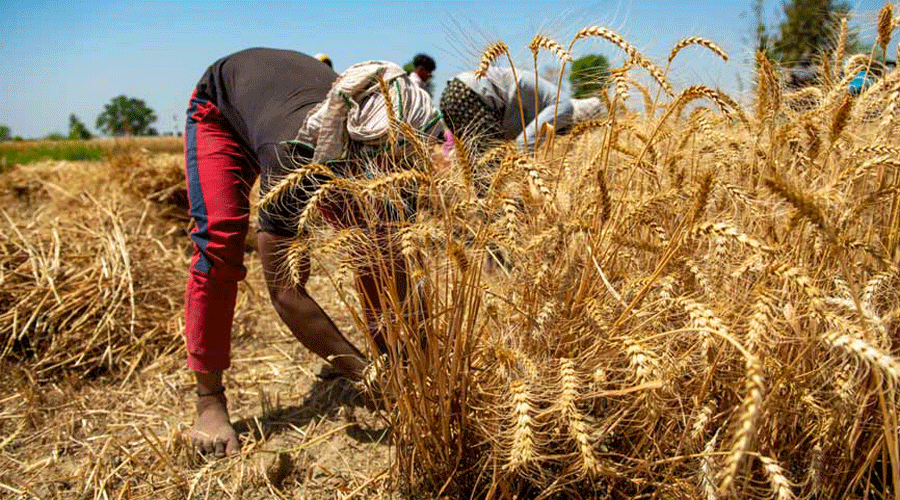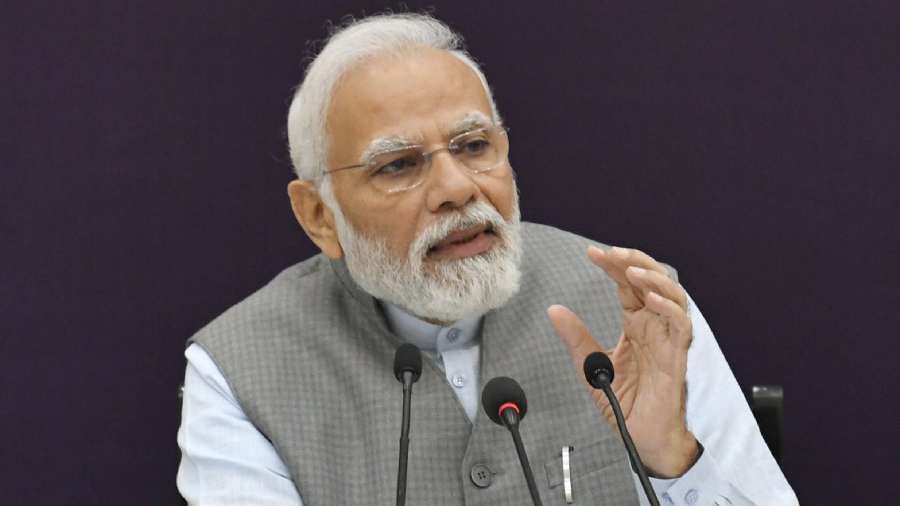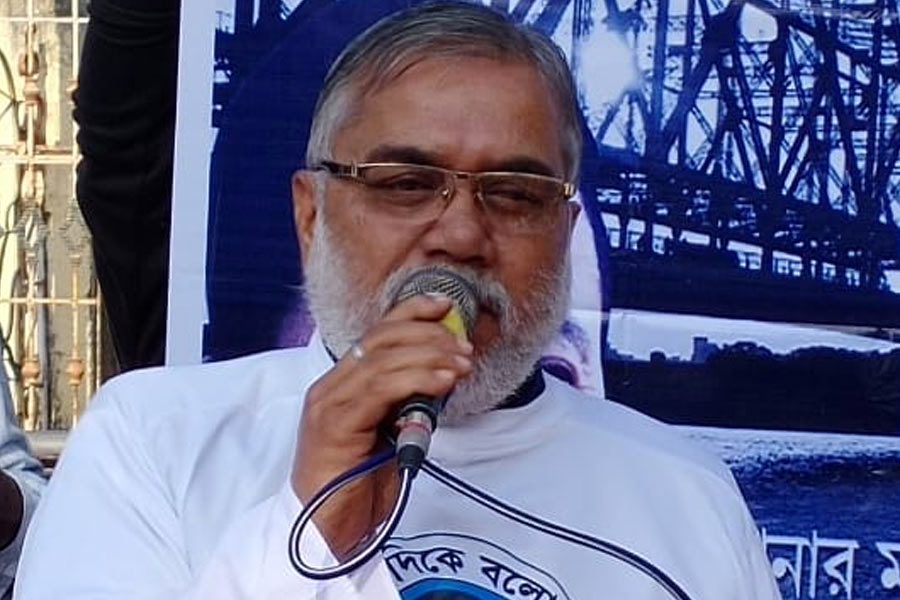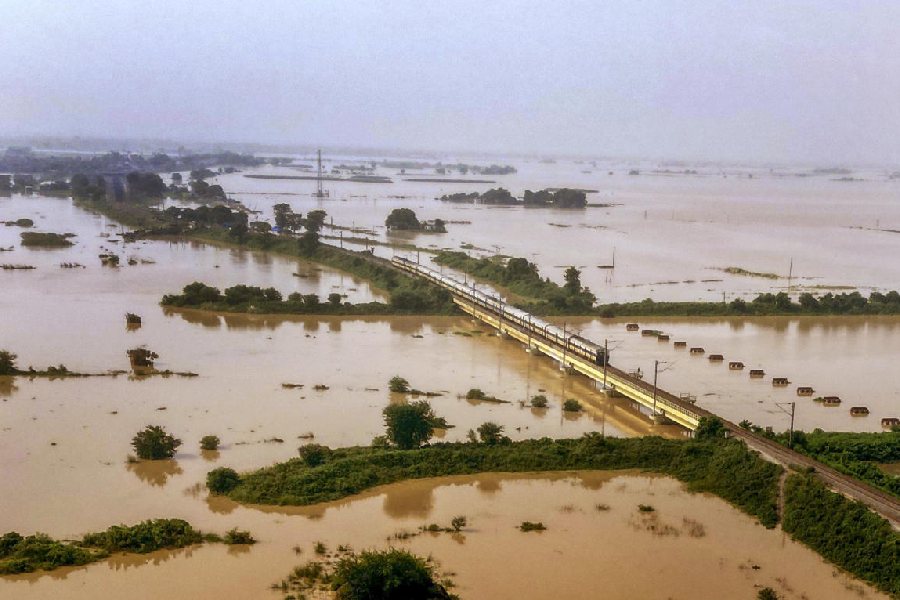The year so far ranks among the worst for Ali, a 75-year-old farmer in Uttar Pradesh who lost 35 per cent of the wheat crop he sowed in his two-hectare field due to the heatwave. The quality of the harvest was not that good either.
His paddy crop was affected as well, but it was not as bad as the wheat crop. Ali feels 2022 is definitely the worst farming year of his life.
"I sowed the wheat seeds in December-end and harvested it in April, but the heatwave witnessed in March led to a loss of crops," the resident of Kodia in western Uttar Pradesh said.
Kamal, a 54-year-old farmer who owns the field next to Ali's, was lucky as he sowed mustard as well this year. The harvesting season for mustard is shorter than wheat, and hence, the crop was not affected by the heatwave.
"The loss I incurred from wheat was compensated by mustard. But wheat and paddy are staple crops that we grow. We can change our pattern for a year but that cannot be the case every year. We just do not know how the weather will be next year," he said.
Climatic conditions such as drought and heavy rainfall were considered abnormal just a decade back, but now they are the new normal, Kamal said. "Farmers like me are grappling to address this crisis."
Rishi, a farmer from Pilakhana village of western Uttar Pradesh, said he has decided to grow crops with shorter harvesting season like peas and maize alongside wheat so as to not be completely dependent on just one crop.
"It might lead to less production of wheat but we cannot do it at the cost of our earnings," he added.
India's wheat production is projected to have declined nearly three per cent to 106.84 million tonnes in the 2021-22 crop year. The decline is likely to have been caused by a heatwave that resulted in shrivelled grains in the northern states of Punjab and Haryana.
There were reports that India was planning to import wheat in view of the shortage but the government denied it.
This year, India recorded its warmest March in 122 years with a severe heatwave scorching large swathes of the country in the month. The average temperatures observed pan-India in April was 35.05 degrees Celsius, which was the fourth-highest for the month in 122 years.
Agriculture experts, however, underscored the need to raise the issue of climate change impacting India's food security at the COP27 which is scheduled for November. They noted that COP27 can be a critical turning point to connect food security and nutrition with climate change.
Shweta Saini, a senior consultant at the Indian Council for Research on International Economic Relations (ICRIER), said food security and green energies have to be balanced at these international negotiations.
"For countries like India where the malnutrition rate is very high and it is an agriculture-centric country, we feel the commitment for food security and green energies has to be balanced. So, while India is talking about biofuel, the question we should be looking at is whether food can be used for fuel," she said.
The National Policy on Biofuels, 2018 allows production of ethanol from damaged food grains like wheat and broken rice.
Devinder Sharma, a food policy and agricultural trade expert, said at COP27, countries like India need to stop their "obsession" with GDP.
"Till the economy is not structured in a way to radically challenge the climate crisis, nothing will change, and that is something that needs to be brought out in the discussions at COP27," he said.
The COP is the main decision-making body of the United Nations Framework Convention on Climate Change. It includes representatives of all the countries that are signatories to the UNFCCC. The COP assesses the effects of measures introduced by the parties to limit climate change against the overall goal of the UNFCCC.
Agriculture experts have flagged the recent rise in mysterious diseases causing dwarfing of crops, saying this too may be the result of climate change.
"There is dwarfing (of crops) happening in Punjab and Haryana, and that is mysterious because no one knows why it is happening. We have to see how closely it is connected to climate change," Saini said.
Sharma added that climate change might be behind the mysterious disease causing dwarfing.
Saini and Sharma also pointed out that there were other Rabi crops which were affected by climate change.
"The heatwave that we were expecting five-six years down the line has already happened. It affected the wheat crop and we also know it led to loss of other crops and most Rabi crops that were harvested then such as barley. Vegetables were affected too and even paddy was affected because of monsoon," Sharma said.
Saini said heat doesn't always impact the crops, but because of the heat, there are pest attacks at times, and that is another symptom of climate change.
"We still have to figure out if climate change has a role in it," she added.
Sharma said not just India but every country must focus on food self-reliance.
"There is no escape if we don't have adequate stocks. We will be standing with a begging bowl and it will lead to food riots. Climate change has become a major factor in the geopolitical situation of our country, and we need to acknowledge that," he added.
The first impact of climate change via heatwaves was felt on food security and that needs to be dealt with, Saini said.












